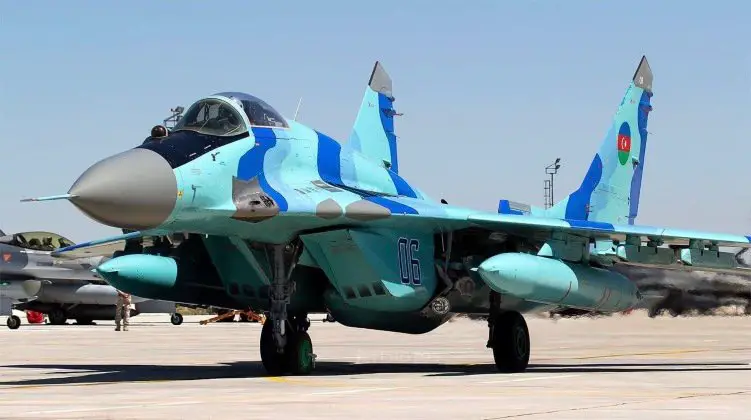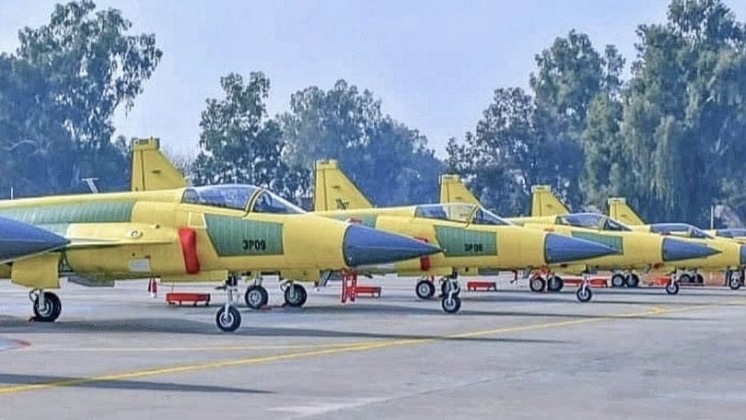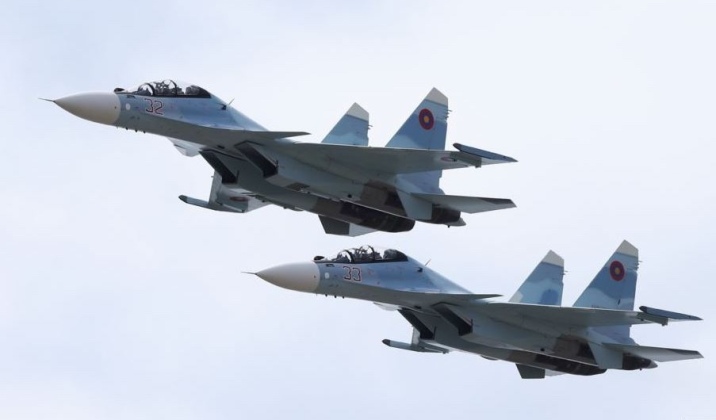The Ministry of Defence of Azerbaijan is currently negotiating the possible acquisition of Chinese JF-17 Block 3 fighter aircraft under a contract reported to be valued at $1.6 billion. This closely follows the class’ entry into service the Pakistan Air Force in 2023, and will allow the Soviet successor state to phase its older fourth generation MiG-29A/UB fighters out of service as well as possibly its Su-25 attack jets. These aircraft were inherited from the USSR when the superpower disintegrated in 1991, and are nearing the end of their operational lifespans. The JF-17 Block 3 is notably a much lighter aircraft than the MiG-29 and has a single rather than a twin engine configuration, which combined with use of materials and production techniques close to four decades ahead technologically ensures that the new aircraft have far lower maintenance needs and operational costs. The MiG-29’s flight performance is nevertheless far superior, with its manoeuvrability still being unrivalled by other fighters without thrust vectoring capabilities, while its speed, operational altitude and climb rate are significantly superior to those of the JF-17.
The JF-17 Block 3 will provide the Azerbaijani Air Forces with comfortable superiority over the primary fighters fielded by neighbouring Armenia, Russia, Turkey and Iran in terms of the sophistication of its avionics and weaponry. The new fighter’s avionics and armaments are overwhelmingly more capable than those of the MiG-29, and use technologies developed for the J-20 fifth generation air superiority fighter, which today form the elite of the Chinese fighter fleet and is rivalled only by the American F-35 in sophistication. The new JF-17 variant pairs a KLJ-7 active electronically scanned array (AESA) radar with the PL-15 and PL-10 air to air missiles. AESA radars provide not only significantly greater power and faster scan times than equivalent radars with either passive electronically scanned arrays or mechanically scanned arrays, but also have far lower signatures providing a degree of stealth as well as far greater electronic warfare potential. The PL-15 is one of very few air to air missiles in the world to use its own AESA radar, and has few rivals in terms of engagement range at approximately 250km. The PL-10 also has very few rivals in terms of performance, and can engage targets at extreme off boresight angles when paired with the new JF-17 variant’s helmet mounted sights.
The JF-17 Block 3’s primarily client is the Pakistan Air Force, and although being well under half the size of the Su-30MKI fighters that form the backbone of the Indian Air Force, they partly compensate with significant superiority in the sophistication of their radars and weaponry. Azerbaijan’s neighbours Armenia and Iran have notably both ordered more advanced successors to the Su-30MKI, namely the respective Su-30SM and Su-35S, which much like the Indian Su-30MKI carry passive electronically scanned array radars and rely on R-77-1 and R-73 missiles far inferior to the PL-15 and PL-10. Aside from its sole regiment of Su-57 fifth generation fighters, all fighters in the Russian Air Force face a similar technological disadvantage, while the Turkish Air Force, which relies on ageing variants of the F-16 with even older mechanically scanned array radars and AIM-120B missiles, is in a far poorer position still.
The JF-17 Block 3’s combination of a very modest and extremely light low maintenance airframe with cutting edge avionics and weaponry makes it a highly cost effective aircraft, with very low lifetime costs raising the possibility that Azerbaijan could significantly expand the number of fighter units it fields to become a significant air power in the region. Acquisition of Chinese aircraft also rids the country of reliance either on Russia or on the Western world, both of which are perceived to have leaned towards Armenia in recent hostiles between the two post-Soviet states. The Pakistan Air Force, which was previously expected to invest fully in the new JF-17 variant, has notably acquired higher end J-10C fighters and is set to acquire FC-31 fifth generation fighters which will both provide higher end compliments with the same weaponry and similarly advanced avionics. The two higher end Chinese aircraft benefit from far superior flight performances, much larger radars, longer ranges, and in the FC-31’s case stealth capabilities, providing Pakistan with a high-low combination to supplement its expanding JF-17 fleet. This raises the possibility that Azerbaijan may also show an interest in higher end Chinese fighter classes should its air force be satisfied with the JF-17 Block 3’s performance, with the purchase set to mark its first major manned combat aviation acquisition as an independent state. Reports of Azerbaijani interest in the JF-17 go back to the late 2010s, although the very significant difference in capabilities between the block 3 variant and its predecessors means the new model is expected to have far greater prospects both in the country and in multiple other export markets.



